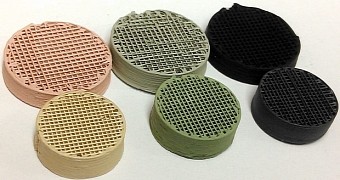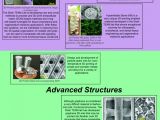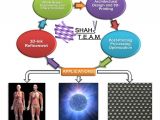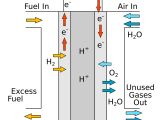Fuel cells are a very important part of all sorts of vehicles and structures, both small and large. They can convert chemical energy into electricity, thus making them useful in cars, submarines, ships, buildings of all sizes, etc.
To make a fuel cell isn't a very simple process, but they have been seeing more and more use, especially now that fossil fuels are slowly making room for alternative sources of energy.
If solar cell research were moving any faster, there might have been some danger to fuel cell marketability. As it is, it’s not, so there is no real danger.
The Shah Group Tissue Engineering and Additive Manufacturing (TEAM) lab, led by Dr. Ramille Shah, announced some progress this week in Boston, at the Materials Research Society’s Fall Meeting & Exhibit.
What they are now exploring is how 3D printing technology can be used in the mass production of fuel cells.
A new material has been created
The Shah Group TEAM develops processes for engineering 3D inks that can expand the variety and functionality of materials compatible with the additive manufacturing techniques of direct ink writing.
Lately, they have been doing all they can to make it possible for the ink to be 3D printed into a bulk structure for both biological and non-biological applications.
Fuel cells are obviously a non-biological application, unless some forward-looking genius finds a way to use bacteria or some other living things to induce chemical reactions needed to produce power. It's not normal inks that are being explored now though.
3D printing has been found to possess great promise in fuel cell design. A new type of fuel cell could use materials 3D printed from ceramic, with very densely packed particles in the printed structure.
Not only can the fuel solid oxide fuel cells be done with less human help but they can be more efficient as well.
How the process works
Materials made of ceramic particles, a binder and several solvents with different evaporation rates are involved in it. The cathode, anode, electrolyte, and interconnects are all made this way, each with a different balance of chemicals in the mixture.
Yttrium-stabilized zirconia (YSZ) particles make up the electrolyte, YSZ with nickel oxide produce the anode, and Iron oxide can be added to certain layers to stabilize the printing process.
Finally, the printing is done at room temperature, after which the piece is exposed to hot temperatures, to produce the smoothness and density needed.
All the while, 3D printing allows for shapes not possible before, like foldable or rollable flat sheets or specialized, custom ordered forms.

 14 DAY TRIAL //
14 DAY TRIAL // 



